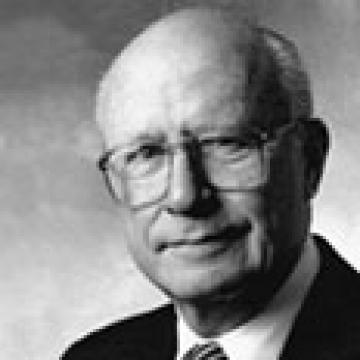Grover Cleveland: Foreign Affairs
Grover Cleveland's principal agenda in foreign policy was to oppose territorial expansion and entangling alliances. With these purposes in mind, he decided to withdraw the Frelinghuysen-Zavala Treaty from senatorial consideration. This treaty gave the United States the right to construct a canal in Nicaragua that was to be owned jointly by the two nations.
Cleveland's first term also found him enmeshed in the complex issue of U.S. fishing rights in the North Atlantic off Canada and Newfoundland. He also worked on the disputed boundary between Alaska and British Colombia and the problem of the diminishing fur-seal population in the Bering Sea. In all of these cases, Cleveland moved with tact and delicacy.
Alliances and Power in the Pacific
Samoa was another matter altogether. Because the United States had treaty rights to establish a naval base on the island, Cleveland reacted strongly when Germany tried to install a puppet monarch. The President dispatched three warships to Samoan waters, a bellicose action that eventually produced a tripartite protectorate over the islands signed by Germany, Britain, and the United States. After he left office, Cleveland criticized the agreement as an entangling alliance with European monarchies.
In his second term, the situation in Hawaii caught Cleveland off guard. He was concerned that the Harrison's administration and American sugar planters on the islands had conspired during the Hawaiian revolution of 1893 to overthrow the Hawaiian monarchy. Cleveland tried to pressure the revolutionary government into handing power back to Queen Liliuokalani. When the American sugar planters threatened to resist by arms and the defiant Queen refused to grant amnesty to the revolutionary leaders—she wanted them beheaded—Cleveland washed his hands of the affair in frustration. In a final act of pique, he handed the problem to Congress, where it remained until President McKinley affirmed a joint congressional resolution that made Hawaii an American territory in 1900.
Disputes in the Americas
Cleveland's interference in the Venezuelan boundary dispute was his most controversial foreign policy decision. Britain, which had amassed holdings in British Guiana since the early nineteenth century, laid claim to the Orinoco River—and thus a vast interior trading region reaching into Venezuela. When Venezuela asked the United States to arbitrate the dispute, Cleveland eagerly accepted. The British balked at U.S. involvement, leading Cleveland to write a "twenty-inch gun" missive in which he threatened Britain with war. To force the point, he sent U.S. naval vessels to confront British warships near Venezuela. Amidst a wave of war hysteria in America, Britain agreed to accept arbitration. Historians debate Cleveland's motivations here as well as the outcome of the episode. What is not in dispute is Cleveland's responsibility for bringing the Monroe Doctrine back to life as the basis of U.S. foreign policy in the hemisphere.
Other foreign policy issues occupied Cleveland's attention during his two terms. In 1885, he sent a small detachment of marines to Panama (then a Colombian province) to help quash a rebellion. He also dispatched U.S. troops to Rio de Janeiro in defiance of a blockade of its harbor by pro-monarchists rebelling against the Republic of Brazil. In Cuba, Cleveland wanted to remain neutral, refusing to support the insurrection against Spanish rule and urging instead that Spain adopt reforms that would lead to gradual independence. On this issue, he stood in opposition to the Senate, which had adopted resolutions urging Cleveland to recognize the belligerency of the Cuban rebels. Congress then moved to defy the President by threatening to recognize Cuban independence. Cleveland responded flatly, saying he would characterize any such resolution as a usurpation of presidential authority. The matter remained unresolved at the end of his second term.
